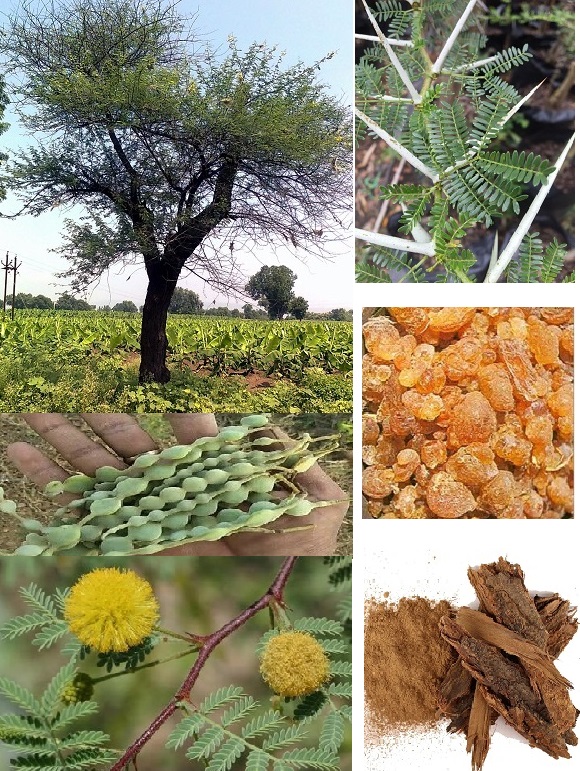BABUL

| संस्कृत: | बब्बूल | ગુજરાતી: | બાવળ | |
| हिन्दी: | बबूल, किकर | Binomial: | Acasia Arabica |
Introduction:
Babul grows as big tree throughout India. Wood is very strong hence used in furniture and constructions. Branches have sharp thorn. Leaves are small green arranged on two sides of stem, flowers are yellow round, and pods are grayish green containing seeds and glue like liquid. Gum is reddish yellow after thickening from cuts on the bark.
Known as healing tree as all parts of the tree, leaves, bark, stems, pods, seeds, roots, gum are used in ayurvedic medicines. For ages, green stems were used to clean teeth.
Uses:
1. Strengthens teeth, prevents gum diseases, prevents cavity and removes plaque. Used in preparations of toothpaste and tooth powder.
2. Gum is used to sooth rashes, inflammation, soreness and burns on skin.
3. For treatment of mouth Ulcers, inner part of bark is boiled in water and used to gargle.
4. On fractured bones, Powder of seeds is given with honey to set and give strength to the bones.
5. Juice of leaves is useful in treatment of Dysentery and Diarrhea.
6. Decoction of leaves and honey is used as eye drops to relieve watering of eyes. For redness of eyes, apply poultice of leaves externally on eye lids after closing eyes.
7. For strength, gum is fried in ghee and added to wheat flour fried in ghee till gets brown. This is consumed after adding sugar and spices.
8. Babul gum is useful in treatment of arthritis.
9. Paste of leaves is applied on scalp for 15-20 minutes to control hair fall.
10. Paste of bark is useful to treat oozing eczema.